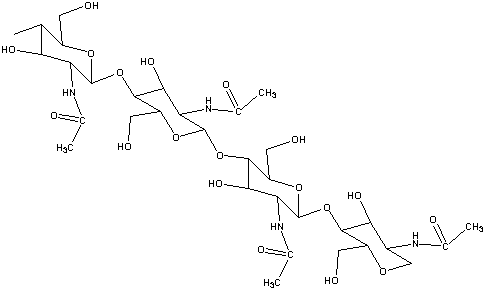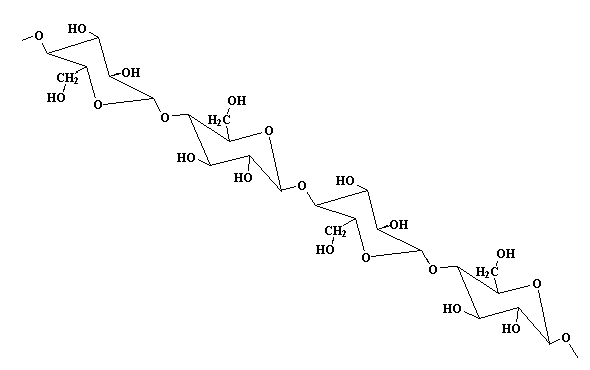
Chitin
Chitin is a
complex macromolecule, AKA a polymer. Chitin can be found in
crustaceans, such as crabs, lobsters, and shrimp. It can also be
found in insects, worms, fungus (or is it fungi?) and mushrooms. The thing about
chitin is that it is a natural polymer,
which means that it is found in nature.
In the creatures where chitin is found, it is in
different percentages depending on the place. As you can see from the
chart of several creatures below, crabs contain the largest percentage
of chitin.
(all numbers are approximate)
| Fungi | 5-20% |
| Worms | 20-38% |
| Squids/Octopus | 3-20% |
| Scorpions | 30% |
| Spiders | 38% |
| Cockroaches | 35% |
| Water Beetle | 37% |
| Silk Worm | 44% |
| Hermit Crab | 69% |
| Edible Crab | 70% |
The structure
of chitin is very similar to cellulose as you can see below:
Chitosan is a polymer derived from chitin and is used in
applications from health care to agriculture to dyes for fabrics. There
are even medical applications and companies who use products made with
chitosan as part of weight loss programs. Chitin
Chitin
 Cellulose
Cellulose
 What
makes them so similar is that both are b(beta)1-4 linked. To the left is a small section of the
chitin molecule with the carbon atoms labeled with numbers to show the
order. The oxygen is not labeled but is holding the number two spot. The difference between the cellulose molecule and the chitin molecule
is that chitin has an pendent amide group instead of the pendent hydroxyl group (alcohol) which cellulose has.
What
makes them so similar is that both are b(beta)1-4 linked. To the left is a small section of the
chitin molecule with the carbon atoms labeled with numbers to show the
order. The oxygen is not labeled but is holding the number two spot. The difference between the cellulose molecule and the chitin molecule
is that chitin has an pendent amide group instead of the pendent hydroxyl group (alcohol) which cellulose has.
To get a three dimensional image of cellulose, and all the
information you could possibly want on this natural polymer click here
Chitosan
Chitosan is very similar to chitin, see below. The difference is that
chitosan has an amine group instead of an amide group. This just
means that chitosan doesn't have any carbons double bonded to oxygen
and chitin does.
 Chitosan
Chitosan
Uses of chitin and its derivatives
One of the more important things that chitin, and its products, could
be used for is in treating burn patients. Chitin has a remarkable
compatibility with living tissue, and has been looked at for its
ability to increase the healing of wounds. There is also evidence
that chitosan can reduce serum cholesterol levels. More research
has also indicated that chitosan can increase crop yields, and clean
and clear up swimming pools.
Return to Shelled Creatures
Return to Octopus and Squid page
Return to the Polyquarium